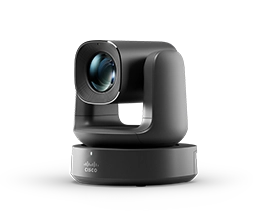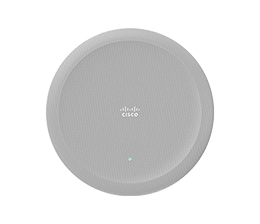Voice over Internet Protocol is a highly effective alternative to traditional calling systems that allows you to make and receive calls over a broadband internet connection rather than a landline. It converts voice signals into digital data packets, transmitting them over the internet or any other IP-based network. In contact centers, VoIP is crucial for supporting a range of communications, including inbound and outbound calls, virtual call centers, and remote agent setups. VoIP reduces telephony costs, enhances flexibility, and integrates with various digital communication tools to provide a seamless customer service experience.
Enterprises are constantly striving to improve their contact center operations, and one way to achieve this is through the adoption of Voice over Internet Protocol (VoIP). This technology enables voice communication over the Internet, replacing traditional analog phone lines.
In this guide, you will gain an understanding of what exactly VoIP is, how it works, and why it might be a valuable solution for your contact center. Additionally, you will learn the key benefits of a VoIP contact center solution and how to choose the best vendor for your business needs.
What is a VoIP contact center?
Calling is key to any contact center’s overall success. Although there are numerous digital channels available, 61% of consumers still prefer to speak with customer support over the phone. And, according to McKinsey, nearly two-thirds of contact center leaders say call volumes have increased in recent years despite the availability of self-service options.
However, traditional phone services lack the flexibility or scalability businesses need to keep up with heightened demand. Moreover, they’re simply incompatible with hybrid work. With agents working from home nearly as much as they do in the office, legacy on-premise systems won’t suffice.
Fortunately, that’s where VoIP shines. Many businesses trust VoIP technology to provide agents and customers with secure, reliable, and flexible experiences.
How does a VoIP phone system work?
Before delving into VoIP, it is important to understand the traditional Public Switched Telephone Network (PSTN). The PSTN is a circuit-based telephony network comprising various components such as telephone lines, fiber optics, switches, cellular networks, satellites, and cable systems. These elements work together to create the traditional phone network that most people are familiar with.
The problem with PSTN is it’s heavily dependent on physical infrastructure—dedicated phone lines, fiber optic cables, etc. If one of these components fails, it could disrupt your entire operation, preventing calls from going in or out of the contact center.
Additionally, businesses have historically relied on Private Branch Exchange (PBX) hardware to connect their internal phone network to the PSTN. However, PBXs must be physically installed, maintained, and upgraded over time—a very costly and cumbersome process.
The good news? A VoIP system eliminates all of these complications. Instead of using physical landlines, users can make or receive calls using IP telephony. Whereas the PSTN transmits analog voice data, VoIP packages digital voice signals into small packets and sends them to the recipient via the internet.
In basic terms, VoIP phone calls convert analog data into a digital format, allowing them to be transmitted to an awaiting IP address. This approach has played a pivotal role in enabling connections over the past few years. Companies frequently combine VoIP with video conferencing platforms, making both personal and professional communication seamless, simpler, and more effective.
Benefits of VoIP call center solutions
Today, an estimated 31% of businesses use VoIP technology, but that number is sure to grow in the coming years. Why? Integrating VoIP service into your contact center has numerous benefits:
Improved scalability and flexibility
VoIP call center solutions are designed to withstand much greater call volumes than a typical PBX system. This is especially vital for growing businesses and enterprise-size organizations with a widespread or global presence. Without any worry about call volumes overburdening the underlying infrastructure, they can offer 24/7 customer support—a key competitive advantage.
Cloud-based VoIP services are especially nimble, allowing agents to access their professional line from any web-enabled device. Their calling capabilities are always the same whether at home, on the go, or in the office. Plus, mobile phone integration means employees won’t have to scramble to attend meetings or worry about forwarding calls. They can instantly access their professional number with just the tap of a button.
Indeed, flexible communication systems are already making a tangible impact on enterprises worldwide. Take Rent-A-Center, for example. The company’s 14,000 employees previously relied on a patchwork of technologies, which were too costly and difficult to manage.
Transitioning to a centralized, cloud-based platform helped the business avoid phone-related issues and expensive downtime. Now, it can instantly make changes, forward lines, and add new phone numbers at scale—all in one solution.
Greater call quality
The last thing customers want when talking to an agent is shaky, broken, or delayed audio. Likewise, dropped calls can disrupt an ongoing conversation, hinder agent productivity, and even drive customers away.
Thankfully, with the right provider, your contact center can avoid these issues. Cloud calling services, which leverage VoIP technology, also have the advantage of a larger cloud-based ecosystem with advanced capabilities.
For example, Webex Calling uses artificial intelligence (AI) to enable noise cancellation, which reduces background sounds and eliminates distractions. Moreover, Quality of Service (QoS) tools prioritize VoIP calls when your bandwidth is reaching its limit, ensuring call quality is always at its best.
Enhanced customer experience and satisfaction
Some VoIP call center solutions do much more than enable cloud calling. The best platforms also come with built-in dashboards and robust customer analytics.
Why does this matter? Without context, agents have no choice but to ask customers to repeat themselves and rehash their issues. This isn’t only frustrating but also inefficient. However, with greater intelligence at their fingertips, agents can improve first-call resolution metrics and deliver a superior customer experience.
Cost savings and efficiency gains
Rather than install and maintain a PBX system, VoIP contact center solutions are delivered entirely over the Internet. That means you receive software updates automatically with virtually no maintenance required.
Traditionally, scaling up your call center meant purchasing additional lines and installing new equipment, which can be expensive and tedious. VoIP eliminates this, allowing you to instantly add new users who can simply leverage your existing hardware or their devices. This greatly lowers your total cost of ownership and, as an added benefit, removes a potential barrier from your growth trajectory.
Plus, you can maximize uptime and availability because operations aren’t dependent on physical infrastructure. Considering the average cost of downtime is roughly $5,600 per minute, this is a huge win for your business’s bottom line. With fewer disruptions, your agents can be more productive, allowing them to serve more customers and amplify efficiency.
Key features of VoIP contact center software
More than just a phone system, Voice over Internet Protocol is a powerful companion to any cloud contact center solution. When combined into one cohesive platform, they offer a rich set of value-added features, such as:
Real-time analytics and customer data
One of the greatest challenges a contact center agent faces is understanding the customer journey. With more insight into exactly where consumers are coming from, what they’re looking for, and how they’re feeling, your team can deliver exactly what they need whenever they need it.
The problem? This is only possible through the power of customer data. If your technology stack includes a mixed bag of siloed channels and solutions, chances are you’re not leveraging data to its full potential.
That’s why it pays to have an all-in-one comprehensive and centralized contact center solution. The right software can seamlessly collect, aggregate, and deliver insights on customer journeys across any channel or application. Accessible in one pane of glass, agents can harness real-time data to make informed decisions about how best to personalize the customer experience. This includes complete contact histories, previous feedback, inbound channels, and even transcripts of live chat conversations.
Centralized contact center management
Supervisors and managers need 24/7 360-degree visibility into contact center operations. Disparate tools make this difficult, if not impossible, which is why many seek centralized platforms.
The best VoIP software solutions offer customizable dashboards explicitly designed for call center management. Dedicated desktop views allow you to holistically monitor agent performance, inbound and outbound call volumes, success metrics, and more. Cloud data analytics also provide historical and real-time reporting tools, empowering you to easily generate reports on compliance, productivity, cost, etc.
AI-powered self-service tools
Today’s most advanced contact center platforms are bringing sophisticated AI capabilities to market. For example, virtual agent tools like interactive response (IVR) systems and automated chatbots can elevate self-service experiences to a whole new level.
AI-powered virtual agents streamline routine interactions by providing a natural conversational experience over live chat and voice. This not only reduces your average handle time but also improves first-contact resolution. It boosts agent productivity by allowing them to focus on more complex inquiries. Plus, fewer calls escalating to agents leads to long-term cost savings.
But, if certain interactions do require escalation, these self-service channels seamlessly transition to live agents without losing any contextual information.
Integrated UCaaS and CCaaS
You shouldn’t have to choose between a contact center or a communications platform—you deserve both in one comprehensive solution.
Bundling Unified Communications as a Service (UCaaS) and Contact Center as a Service (CCaaS) makes sense. Both are two halves of the same coin and, in most cases, are complementary.
Whereas UCaaS intertwines all your internal communication channels in a single space, CCaaS does the same for an outbound audience. Bridging the gap between the two allows you to create a more efficient collaboration stack that benefits the entire organization.
Rather than paying for multiple systems, you lower the total cost of ownership with just one solution. Best of all, it ensures data flows smoothly from one department to the next—allowing a better, more personalized customer experience.
Workforce optimization
A chief benefit of VoIP contact centers is their ability to digitize voice signals. Supervisors can optimize agent performance with AI-driven speech analytics while improving customer engagement.
For example, sentiment analysis automatically assesses the caller’s emotion and tone, classifying it as either positive, neutral, or negative. This phonetic data, alongside automated transcriptions and call recordings, can help managers understand how customers felt during the interaction and whether the agent handled it appropriately.
Analyzing these insights allows you to make valuable discoveries about customers, employees, and the business overall. Moreover, you can coach agents to improve their performance and resolve issues more effectively.
Choosing a VoIP provider for your contact center
Deciding on a VoIP provider isn’t easy. Consider these key factors when narrowing down your options:
Integrations: The right platform will seamlessly fit into your existing ecosystem. Whether through application programming interfaces (APIs) or other means, prioritize a solution that doesn’t require you to ditch your ongoing investments.
Customer service: Depending on your infrastructure, Implementing VoIP call center software and onboarding users may be challenging. Look for a partner who knows how to simplify the process and is more than ready to answer questions, train employees, and address any issues that may arise.
Ease of use: Agents aren’t likely to adopt a platform if the interface isn’t easy to navigate. Likewise, managers need a top-down view of all call center operations. The ideal solution simplifies the user experience no matter your role or responsibilities, ensuring complete and frictionless adoption.
Enhance your calling with Webex Contact Center
Technology is now a foundational element of the customer experience. Consequently, organizations need a reliable platform to uplift their contact center and address customer needs through innovative and automated solutions.
Webex Contact Center combines the power of VoIP technology with unified communication, offering businesses all the tools required to streamline operations and turn customer support into a distinct competitive advantage. From workforce optimization and AI-powered self-service to data analytics and centralized management, you can access it all in one comprehensive dashboard.
When T-Mobile transitioned its 12,000 employees to remote work in 2020, it trusted Webex to make it happen. Thanks to Webex Contact Center, the company was up and running in a matter of weeks with a fully streamlined and flexible communications system. Not only did the platform boost agent productivity and customer satisfaction, but T-Mobile’s churn rate dropped from 2.5% to just 0.78%, boosting the customer base by over 30 million people.
Learn more about Webex Contact Center and how our solution can help you optimize your operations today.







